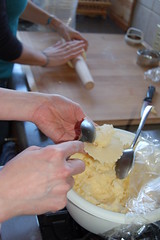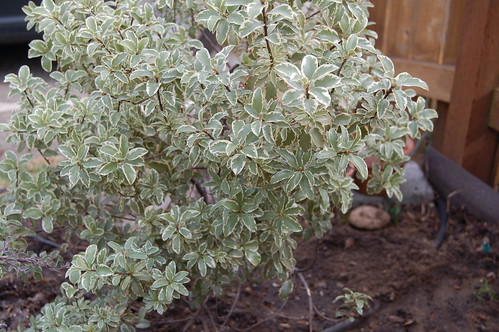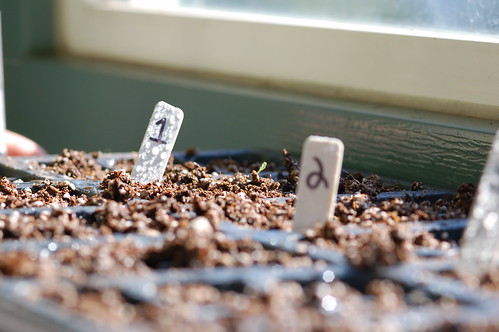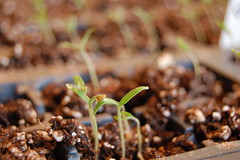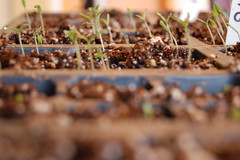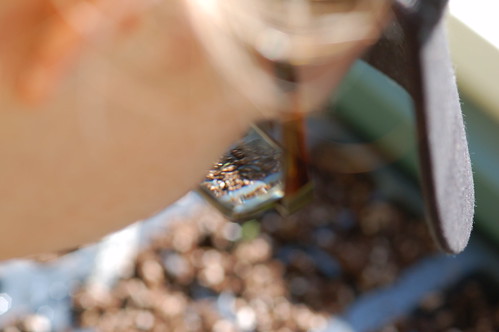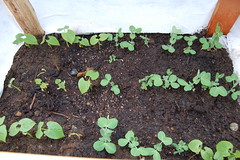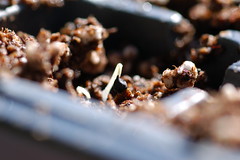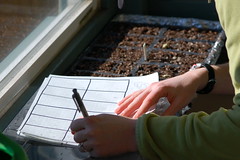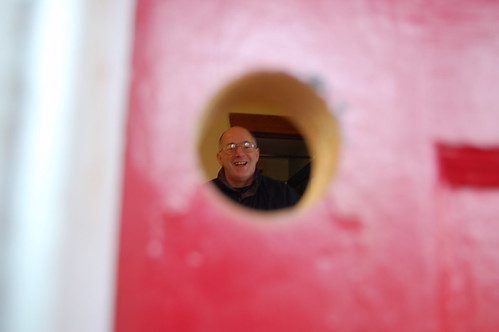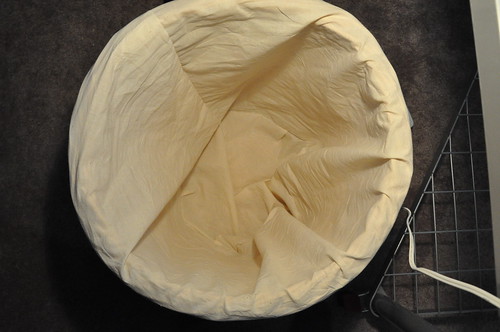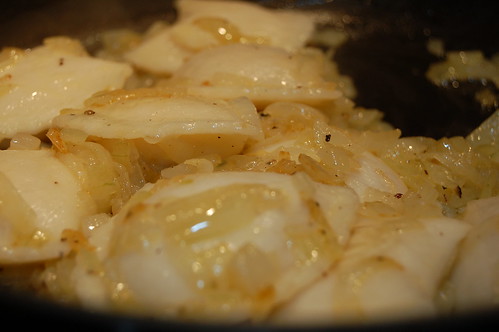
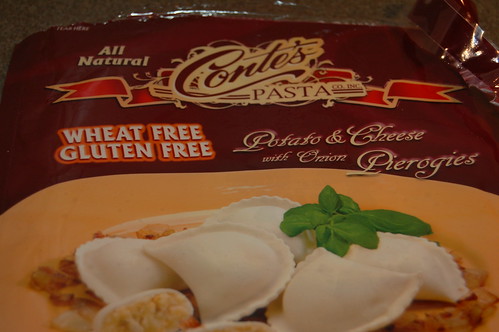
My grandmother loves Pierogies. As do all her children and their children's children. For me, they are the sacred, comfort, feasting, holiday, every day food of my youth. When visiting their house to this day, my grandparents serve up pierogies almost as quickly as they do hugs. And I won't soon forget the magical afternoon three of my closest friends and I spent making pierogies from scratch in my current home: three expatriot Pennsylvanians (and one native) cooking soul food. We ate nearly four dozen pierogies that day.
My grandparents serve up pierogies in lots of butter, onions, and cabbage. It's a simple dish that warms my heart and tummy. A side of thick, heavy bread and horseradish; or if for brunch with potato pancakes and sour cream.
I opted for the former: boiled for 7 minutes while a diced onion simmered in an ungodly amount of Smart Balance butter, drain pierogies and add to butter/onion mixture. I kept them on the burner while we finished our creamed corn side, browning each pierogi on each side. It's not the same method Frankie used (just straight up frying), but it's more conducive to the frozen variety.
Since the whole celiac diagnosis, I have been pierogi free. This is a crying shame. For a Valentines Day present, Quincy purchased six bags of Gluten-Free pierogies from an east coast producer, shipped to our house one-day freezer pack.
The only brand of gluten-free pierogies Q's found (so far) are (sort of) available on Amazon (of course): Conte's Gluten Free Pierogies. As you might guess, a giant ravioli filled with mashed potatoes and cheese and onions isn't difficult to make without wheat, and the end result is a gluten-free pierogi that does not stray from the Mrs. T's standard. We're encouraged now to try it ourselves, from scratch. I might have to fly in Frankie and Regina; while I'm at it, Baba and Champ.



